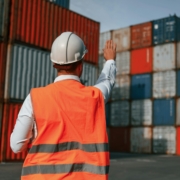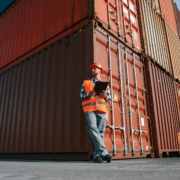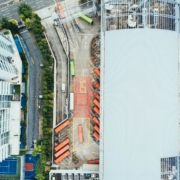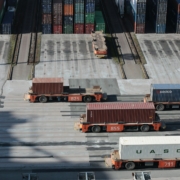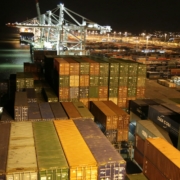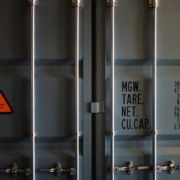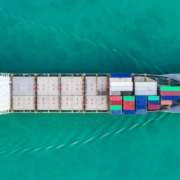Questions To Ask Before Hiring Container Services In Brisbane
Deciding to hire container services in Brisbane can feel like a big step, especially with so many options available. Whether you’re moving house or shipping goods, ensuring you choose the right company is vital. Asking the right questions will guide you to the best decision, guaranteeing your possessions are safe and your experience hassle-free. By understanding what to look for, you’ll be in a strong position to evaluate different service providers effectively.
Opting for a company without doing your homework can lead to unnecessary headaches and costs. By engaging with service providers through targeted questions, you protect your interests and gain valuable insights. This proactive approach allows you to gauge the company’s transparency, experience, and reliability, setting the stage for a smooth journey.
Common Services Offered by Container Companies
Container companies offer a wide array of services that cater to diverse needs, providing solutions that simplify the logistics involved in transportation and storage. Understanding these services can help you identify what you require and narrow down your choices.
1. Transportation: One of the core services provided by container companies is transportation. They ensure your goods reach their destination safely, using specialised vehicles and routes.
2. Storage: Many companies offer both short-term and long-term storage solutions. This is particularly handy if you’re in between moves or need a temporary place for your items.
3. Loading and Unloading: Experienced professionals handling the loading and unloading can make a big difference. Companies usually provide equipment and manpower to move your container efficiently.
4. Custom Solutions: Some companies tailor their services to meet unique client needs. Whether you have fragile items or oversized goods, they can offer custom strategies to ensure everything is handled correctly.
Considering these services allows you to match your specific needs with what a company offers, simplifying decision-making. While one company might excel in storage solutions, another might have an edge in transportation or custom services. Knowing the range ensures you select the services that align with your requirements.
Key Questions to Ask Potential Container Service Providers
When discussing your needs with potential container service providers, having a checklist of questions will help you make well-informed decisions. Here are a few to keep in mind:
– What is your experience with container services in Brisbane? Experience matters, especially in a specific locale. Knowing their background can assure you they understand the local landscape and logistics.
– What measures do you take to ensure the safety of my goods? Safety should be a top priority. Ask about security protocols, handling procedures, and any protective measures they use.
– Can you provide references or testimonials from previous clients? Hearing about others’ experiences can offer peace of mind and insight into what you might expect.
– What are your rates, and what is included in the cost? Transparency about pricing is essential. Ensure there are no hidden fees and understand what is covered in the rate.
– What is your policy on handling damages or issues during transport? Mistakes can happen. Clarify how they tackle problems, ensure accountability, and provide compensation if necessary.
Asking these questions serves as a vital step in selecting the right partner for your container services. Their responses not only reveal operational transparency but also help assess their commitment to customer satisfaction.
Evaluating the Responses
Once you’ve got the answers to your questions from potential container service providers, take a moment to really evaluate what they’ve said. Here’s where you tune your senses to pick up on any hesitations or inconsistencies. A company’s ability to answer clearly and confidently matters a lot. For instance, if a provider talks vaguely about safety measures or fails to provide references, it might be worth considering a different option. Always look for transparency; a good company should have nothing to hide.
Here are some tips for assessing their responses:
– Compare Responses: Look across the answers from various companies to find recurring themes or discrepancies.
– Check for Consistency: Consistent details across different personnel from the same company point to a reliable service.
– Trust Your Instincts: If something feels off about an answer, it’s okay to probe deeper.
Taking these steps can help ensure you’re selecting a provider that genuinely meets your needs.
Making the Final Decision
With all the information in hand, it’s time to make the final decision. A few pointers can guide your choice. First, consider the full package each company offers and see which aligns best with your needs. Are they covering all the services you require at a price that seems fair compared to others?
Remember to take into account your own comfort level with their responsiveness and willingness to answer questions. Their engagement during your inquiry often reflects how they’ll handle your service. You might also want to weigh in on factors like customer support and their flexibility in addressing unexpected issues.
Don’t rush your decision. Give yourself time to reflect and maybe discuss your thoughts with someone you trust. If possible, revisit the sites of the companies you’re considering to re-evaluate any aspects you might have missed.
Choosing the Right Container Services for Your Needs
Choosing a container service is an important decision, and it’s one that requires being informed and strategic. Revisit the key questions and ensure they are fresh in your mind. Remembering to ask about experience, safety, and policies helps you engage fully with potential services.
Make sure that the service you choose aligns with your expectations and logistics needs, ensuring a smooth and worry-free experience. As you move forward, staying organised and informed means you’ll always be in the driver’s seat of your container service journey.
This approach not only smoothens the moving or shipping process but also ensures you are prepared for any future container service requirements that may arise. Armed with the right questions and evaluation strategies, you’re well on your way to making the best choice for your needs.
Whether you’re preparing for a big move or planning your next shipping project, having reliable support makes all the difference. To explore how expert solutions enhance the experience, learn more about our container services in Brisbane with DNV Transport. Let us show you how seamless and efficient this process can truly be.

